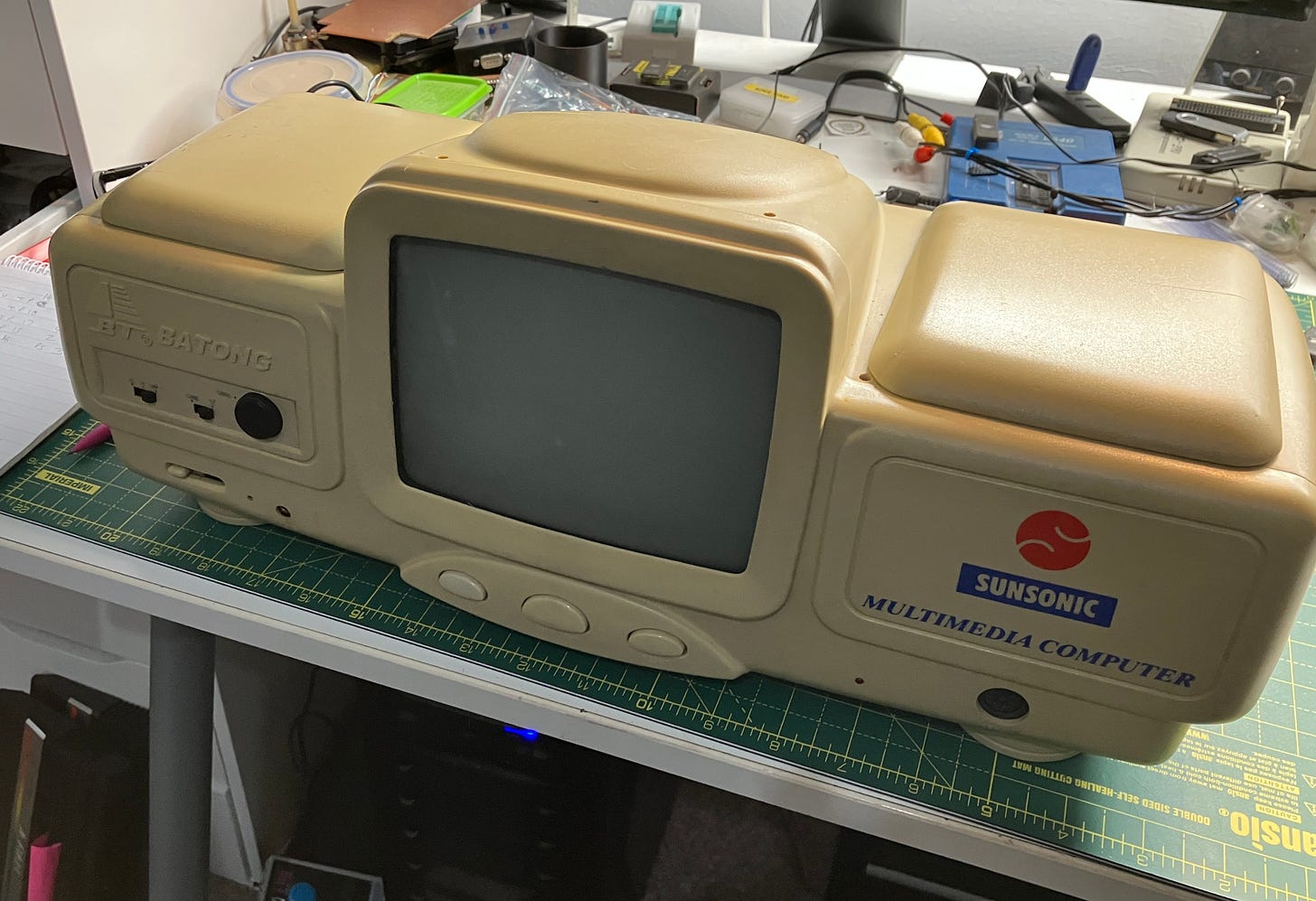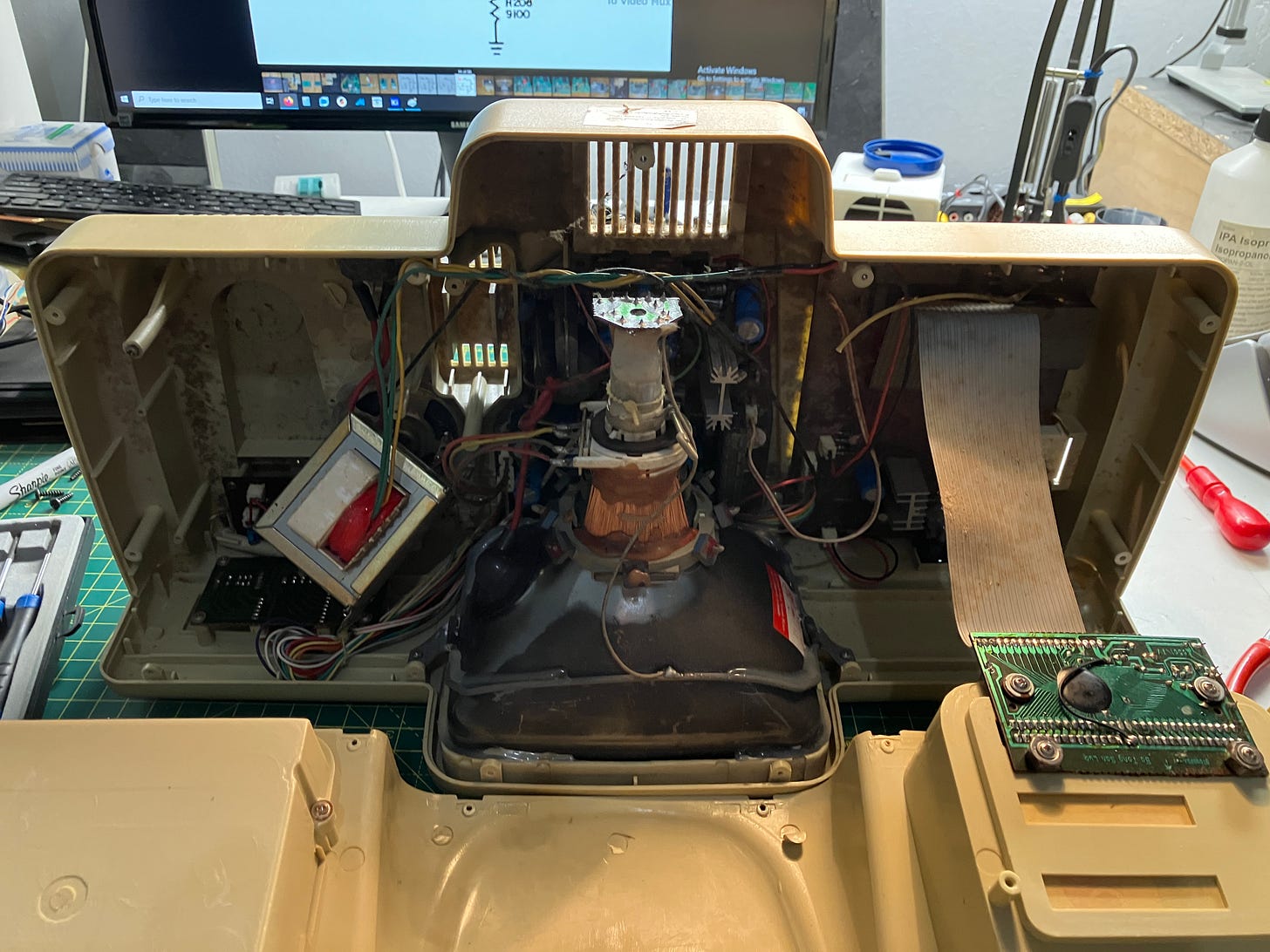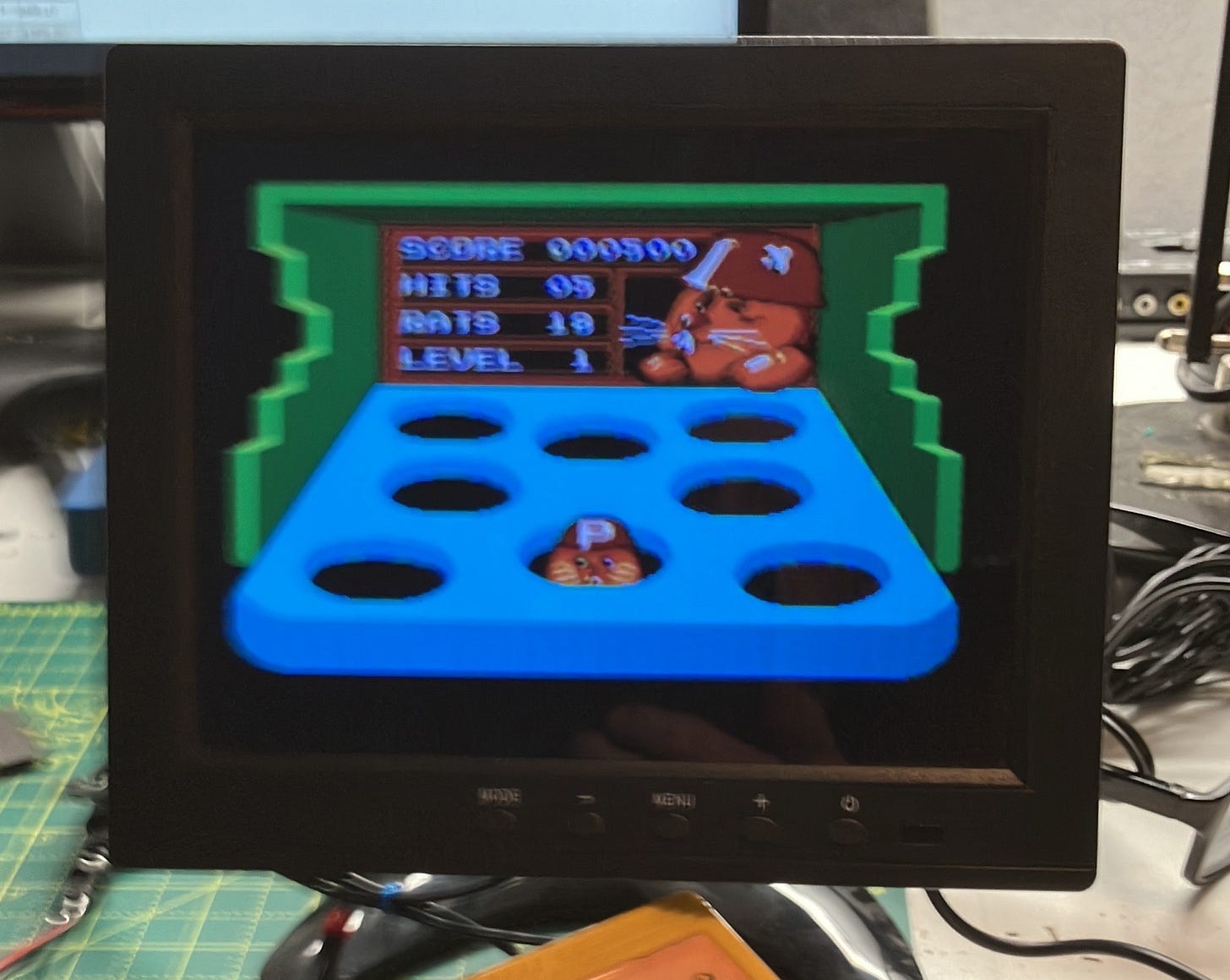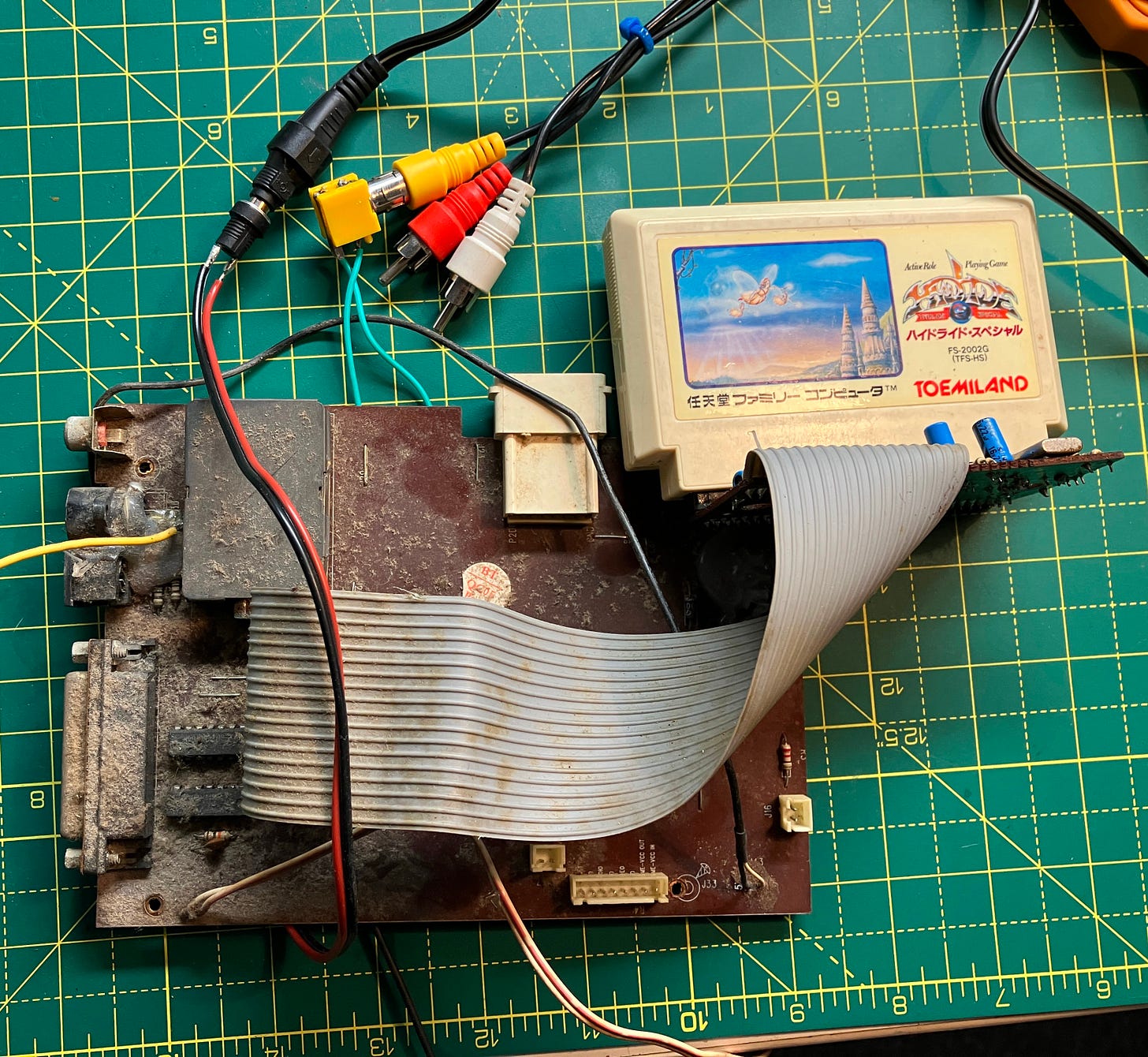I think I’ve mentioned the fact before, that I am a sucker for most things Famicom (ish). Original console variations, the beautifully coloured cartridges, the whacky peripherals and even all the unlicensed knock off games and accessories, of which there are THOUSANDS.
The latest thing that has been popping up on my radar, is an all in one system that I sniffed out on the ‘Electronic Bay Auction Site’ from a recent favourite ‘Eastern’ game supplier. It was priced quite highly. Out of the stratosphere, actually - for what it is. I snuck in a cheeky ‘make a bid’ bearing in mind it was obviously broken and quite, quite janky. The offer was refused with a ‘it’s rare and worth loads’ kind of usual nonsense. Rare, yes. Worth loads - hmm, I find out later on…
Anyhooo - I left it for a few months and it kept dropping in price. Maybe the market for Batongs isn’t as good as the seller though? It finally came down about a third of the original price and I put in another offer of a bit less than the buy it now price, to cover the quite expensive shipping. As you can see from the opening picture, it has a CRT in it and with that, a power transformer inside and a full size keyboard, thus making the delivery not a small sum. Of course it was taken, much to my surprise and now I am the owner of a Batong Sunsonic Thai and English Computer. The box had the main unit (rattling), a keyboard, a power cable with foreign plug and a Sunsonic branded ‘PC98’ famicom cartridge.
Origins *pointless sub heading
I have no idea on its origin. There is next to nothing online about this particular version of Famiclone. Among the Eastern countries that made Famicom / NES clones before AND after Nintendo’s copyright ran out, there have been thousands of different ones in varying quality / colour / shape and probably even smell and mythical auras. I had done a bit of research and there has been some small chatter on Famicom World on one model and I’ve found a Russian language video on another HERE, another non English video HERE and a simple unboxing of a similar one to mine, HERE
Jackie Chan was even advertising similar ‘learning computers’ in the 80s, so they must have been much more popular over there than these cold shores?
My new purchase, however, is different to any I have seen online so far. Crapper, even. Mine does not have a built in 3.5” floppy drive. It has an RF TV tuner instead (this was made way, waaaaay before digital TV existed if any children are reading this - *there aren’t*). Mine also has the 2 extra upgrade ports missing near the cartridge slot.
In some of the advertising in the above videos, I noticed that even cassettes can be used. Not sure if this is for saving and loading your own BASIC programs or for professionally made games. This goes for the floppy drive too. In the land of copyright theft, it would have been an excellent medium to ‘pirate’ onto.
Shiver my timbers.
Unboxing
Upon unboxing there was an ominous rattling coming from the main unit. Which, in due fashion was mint. Like a Murray mint of course, not mint condition. The contents was well packaged but this thing may have taken some knocks, as when I quickly opened it up after taking the first picture for y’all it became obvious what had happened…
IT BROKE.
The transformer (on the left) was hanging down after breaking away from its upside down plastic screw posts. It’s madness that they mounted a heavy transformer with the weight on the opposite side to gravity??? Luckily, the power wires kept the lump away from breaking the neck of the CRT tube. That would be irreversible. Absolute death for a TV tube, is that.
Had this made the item worse in transit? Actually, probably not, as when I had scrutinised the internals and carefully turned everything on, I got the same fault as what was perfectly described in the auction listing.
This is known as Horizontal collapse. The picture has folded into itself horizontally and showing a thing line down the middle. A common fault, usually to do with the horizontal side of the circuitry, oddly enough. It wasn’t playing ‘blind’ either - this is when the thing seems to working without any video. You can usually hear game sounds etc if the main game console is working, but I’ve never seen or heard the included ‘PC98’ software before. Heck, the cart might even be faulty?
Pardon the fuzzy picture, but you can see the software is working ok. It has a bunch of kid’s games on it, this one is a cute whack a mole, asking you to press keyboard keys to bop the Moles. Poor old Moles, they just like popping outta holes.
Inside (beware - gross filth ahead)
While I was inside and before any of the above testing was done, I took filth shots (calm down) and then proceeded to remove said filth. This is easily the worst one I’ve come across.
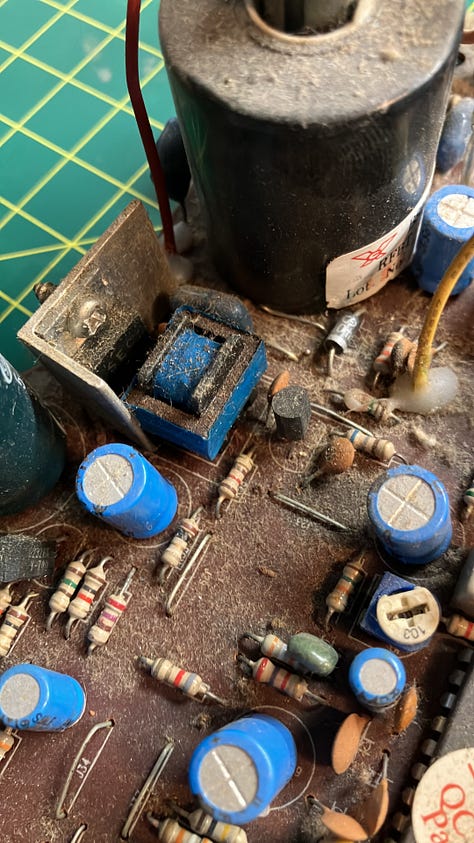
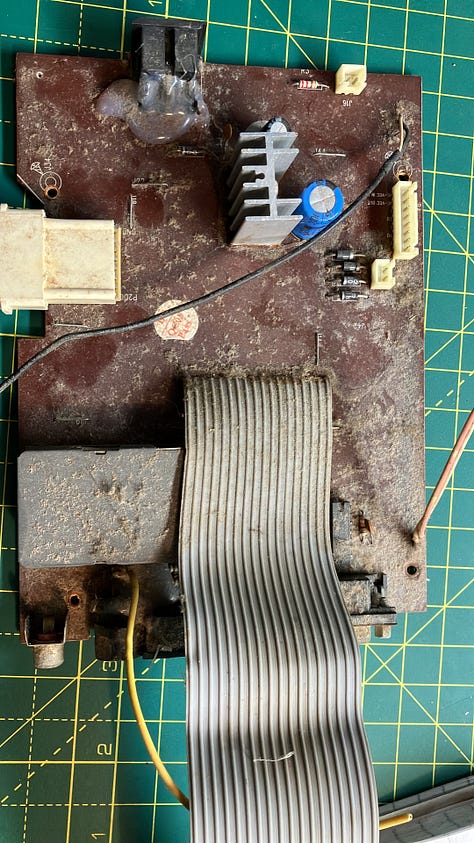
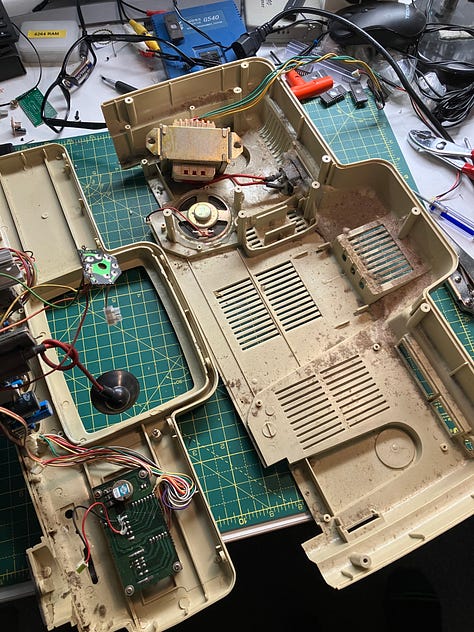
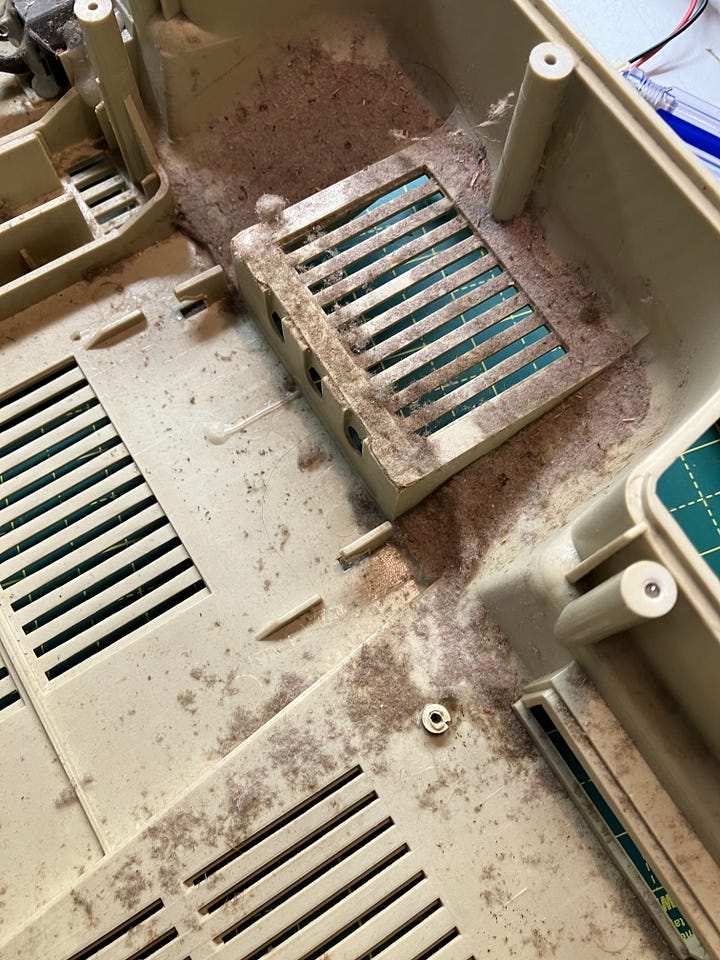
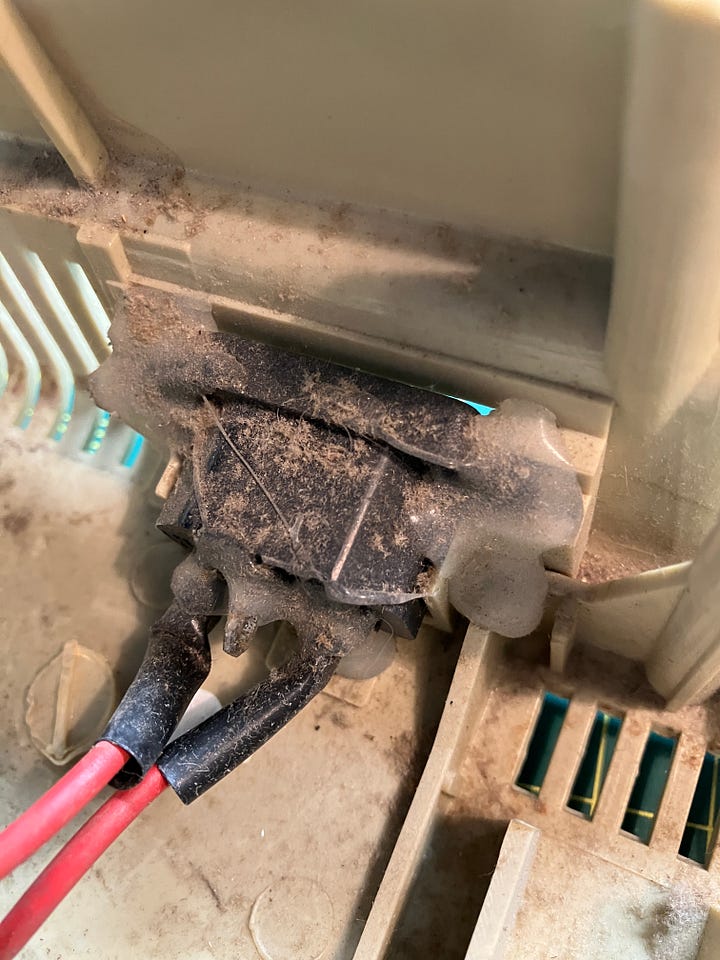
As well as the filthy filth, there was an excessive amount of hot glue. I am a purveyor of hot glue, as you know, but you just don’t expect it from a reputable company like Batong (LOL emoji)
Testing
As I have revealed, after looking it over, I carefully powered it on and got a line across the screen. I checked out the two plugs coming from wires from the power transformer. I’m guessing the country this came from originally had the same AC power as us in the UK - 240v (or there about). I used an IEC lead with the correct three pin plug for our power holes. The IEC socket inside the machine fell to pieces when I broke it out of its hot goo prison. I have since purchased a replacement. I was powering it in a very unconventional way while testing…
The AC power the transformer is kicking out is 12.3VAC to the Famicom pcb and 17.3VAC to the black and white TV monitor. These are then turned into DC via a bridge rectifier and lowered to a 5VDC working voltage for the components on both circuit boards. For whatever reason, the TV was getting power (hence the line) and the Famicom was only getting 4VDC, not enough to kick it into life. I replaced the voltage regulator on the famicom board to no avail. This is what takes a higher DC voltage and brings it down to a lower DC voltage, 5V in this case. For another reason, not sure why yet - it was still only giving up 4VDC.
Here is the Famiclone pcb. There isn’t much there, as all the logic is SOC, system on a chip. Hidden under an epoxy lump.
Handily, the ribbon cable is marked up with some useful information. Namely, VCC, GND, Video and Audio.
I removed the pcb from the unit and soldered on some fly wires to sockets and connectors and Hooked up +5VDC directly to the pcb and output video and audio to RCA jacks and plugged it into a compatible screen. It works *small yay*
The result of the bodge is the whack a mole picture, above. Everything is good, but there’s a quiet volume, high pitch noise present on the audio.
When testing the pack in cartridge, I couldn’t get any games to run on my regular Famicom Jr with the standard game pad. The educational software required the keyboard to use this, not childish game pads, ok?
I plugged in the keyboard and got into a game of ‘Keyboard Mole Attack’ (tm) A few of the keys don’t seem to work, but that is standard for an old disgusting keyboard. Some elbow grease cleaning that should bring it back up to snuff.
Trouble Ahead (featuring fail city)
I now needed to get the silly screen working. It’s the main part of the whole unit, right? Having it’s own screen, so junior doesn’t have to stop Mum and Dad watching the 6 o’ clock news on the big telly when they want to save a princess or whack some moles with a PS2 keyboard.
Cliffhanger.
We’ll get onto the stupid monitor on the next instalment. Harrrumph.




